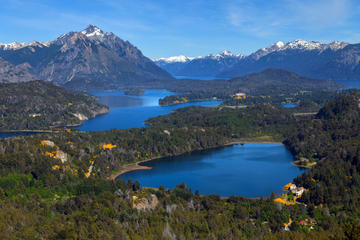
Nahuel Huapi National Park
Nahuel Huapi National Park, which surrounds the lake of the same name, and within which San Carlos de Bariloche is located, is an expansive park of nearly 1.8 million acres, and Argentina’s oldest national park.
The park actually contains another park, Parque nacional Los Arrayanes, which is where the much-visited Quetrihué peninsula is. This peninsula is home to a large tract of 300-650 year old red-to-light-brown-barked Arrayan trees.
The larger park covers a large range of altitude, from 700 to 3400 meters, and contains four distinct ecosystems, from high Andean peaks (above 1600 meters), including the imposing Cerro Tronador, Andean forests, Valdivian rainforests and (mostly treeless) windblown Patagonian steppe.
With four different ecosystems, there is a great variety of different types of vegetation, including several types of Patagonian beech. Small mammals, from the monito del monte (a lemur-faced marsupial, whose name means “little mountain monkey"), foxes and two tiny species of deer are seen near the arrayanes, while slim-necked guanacos (relatives to the llama) graze on the steppe. Five hundred kilometers (300 miles) of trails crisscross the park, which range from the easy 3-hour hike to the Castaño Overo Valley to multi-day hikes, from different access points within the park
Practical Info:
The park is visited from San Carlos de Bariloche or Villa La Angostura, with easy car access and tours available from both of these locales. Public busses circulate on a sparse schedule in the summer to some of the trailheads. The park is also part of the Seven Lakes/Siete Lagos circuit, which goes from Villa La Angostura to San Martín de Los Andes. The park is most visited in summer (January and February) for hiking, and winter (June through September) for skiing.
